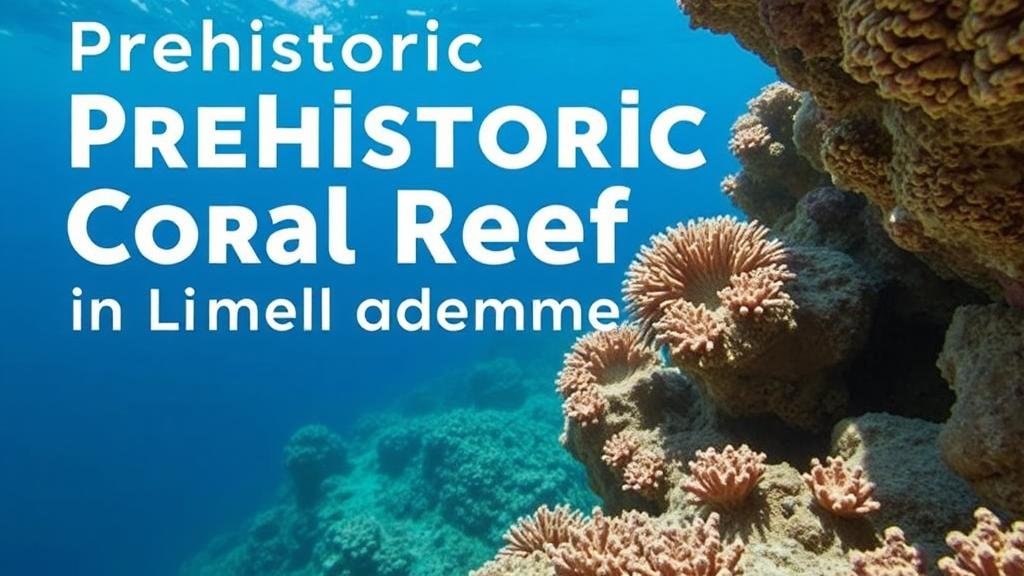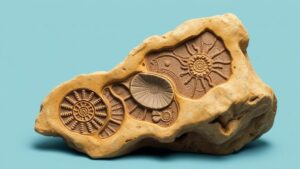Prehistoric Coral Reefs: Fossil Adventures in Limestone Cliffs
Prehistoric Coral Reefs: Fossil Adventures in Limestone Cliffs for Rockhounds and Mineral Collectors
Prehistoric coral reefs are some of the most significant geological formations, offering a window into the Earth’s ancient environments. For rockhounds and mineral collectors, these fossilized structures not only pique interest due to their beauty but also provide invaluable insights into the ecology and geology of the past. This article explores the formation of these ancient reefs, their fossilization processes, and tips for collectors who wish to uncover their hidden treasures.
The Formation of Coral Reefs
Coral reefs are formed by the accumulation of coral polyps, which are tiny, soft-bodied organisms. Over millions of years, these creatures build hard exoskeletons made primarily of calcium carbonate. For many centuries, these reefs thrived in shallow marine environments, leading to the development of extensive reef systems. The most ancient coral reefs date back to the Cambrian period, approximately 500 million years ago.
Today, innovations in geological studies allow us to understand the conditions that lead to thriving coral ecosystems. Key factors include:
- Warm water temperatures, typically between 20-30°C (68-86°F)
- Clear, shallow waters to allow sunlight penetration for photosynthesis
- Stable salinity and low nutrient levels
Fossilization Processes
The fossilization of coral reefs occurs through several processes, primarily lithification, where sediments are compacted and cemented over time. Depending on environmental conditions, fossilized corals can offer varied insights into past climates and ecological conditions. Coral fossils typically manifest in two predominant forms:
- Coral skeletons: Remnants of the original coral, often exhibiting the polyp structure.
- Stromatolites: Layered sedimentary formations created by the trapping, binding, and cementation of sediment by microorganisms, often associated with ancient reef environments.
Geological Importance of Limestone Cliffs
Many prehistoric coral reefs are now found as limestone cliffs, formed from the compression of fossilized corals over millennia. Limestone, composed largely of calcite (calcium carbonate), is commonly used in construction and agriculture, but its geological history plays a crucial role in our understanding of Earth’s evolutionary past.
For example, during the Great Ordovician Diversification Event (GODE) around 485 million years ago, the proliferation of coral reefs marked a significant increase in biodiversity. Collecting specimens from these limestone formations not only provides rockhounds with beautiful displays but also essential data for paleontological studies.
Practical Tips for Collectors
For those eager to venture into the world of prehistoric coral fossils, consider the following tips:
- Research locations: Many fossilized corals can be found in the Devonian and Mississippian limestone deposits across the U.S., especially in states such as Ohio, Indiana, and Illinois.
- Tools of the trade: Equip yourself with essential tools, including a rock hammer, chisel, safety goggles, and sturdy gloves to protect against sharp edges.
- Join local clubs: Collaborating with local fossil clubs can provide guidance, camaraderie, and access to exclusive collecting sites.
Real-World Applications
The study of fossilized coral reefs has practical implications beyond mere collection; these ancient structures inform contemporary scientists about climate change and biodiversity. By analyzing ancient coral growth patterns and the conditions under which they flourished, researchers can draw parallels to todays ecological challenges, aiding in conservation efforts.
Actionable Takeaways
Engaging with prehistoric coral reefs presents a fascinating intersection of geology and paleontology. By understanding the formation processes, fossilization, and historical significance, rockhounds and mineral collectors can develop a deeper appreciation for these ancient wonders. As you embark on your fossil-hunting adventures, remember to:
- Document your findings for future reference and study.
- Respect the natural environment and follow local regulations regarding fossil collection.
- Share your discoveries with the community to foster a greater understanding of our Earth’s history.
In essence, the pursuit of prehistoric coral fossils is not merely a pastime; it is an enriching journey through time, unveiling the mysteries of lifes evolution and the Earths ever-changing landscapes.



